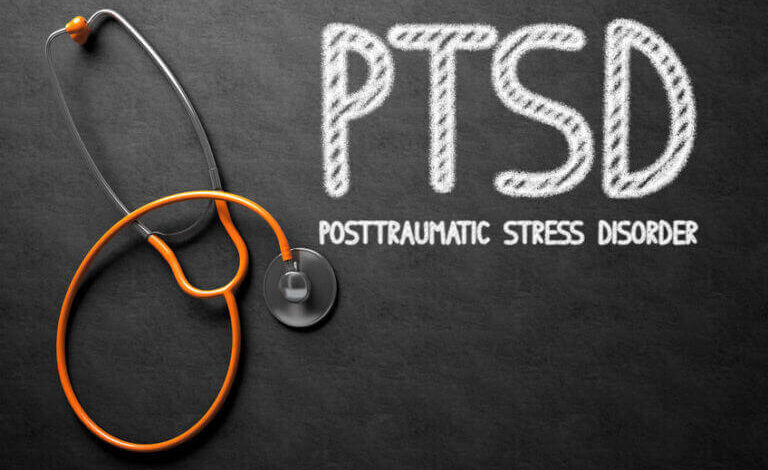On March 30th each year, the world comes together to raise awareness of a mental health disorder that affects nearly 6 million Americans, each in a distinctive way.
Bipolar disorder has an impact that goes far beyond numbers.
Living with bipolar disorder may not be easy, but as van Gogh, himself once said: “The beginning is perhaps more difficult than anything else, but keep heart, it will turn out all right.”
The occasional mood swings are standard for many individuals. Still, when these mood swings become regular and interfere with daily functioning, you may consider a visit to your doctor to talk about bipolar disorder. Bipolar disorder is characterized by extreme shifts in an individual’s mood and energy levels to the point that it interferes with daily functioning. This mood disorder is generally misconstrued as a disorder of rapidly ricocheting moods that go from profound misery to extraordinary elation. However, this common mood disorder is much more complex than the assumed emotional labile rollercoaster that is portrayed in the media. Individuals with bipolar disorder may experience manic or hypomanic episodes once a year, with many days of depression in between. Alternating moods most likely do not alternate daily, weekly, or even monthly. Still, they may alternate a few times a year or less, hence why this portrayal of an individual experiencing a rollercoaster of emotions is falsely portrayed in the media as bipolar disorder.
Who is affected by bipolar disorder?
Bipolar disorder affects approximately 5.7 million American adults (2.6% of the U.S. population) each year.
The median age of onset for bipolar disorder is 25 years of age. However, bipolar disorder can begin in early childhood or start as late as the 40s and 50s.
Bipolar disorder affects the same number of women as men and is found in all ages, races, ethnic groups, and social classes.
Females with bipolar II disorder are more likely to experience periods of rapid cycling compared to men with the same condition.
Women with bipolar disorder are more likely to have more depressive episodes and mixed episodes than men with bipolar disorder.
Bipolar disorder results in 9.2 years reduction in expected life span.
Up to one in five individuals with bipolar disorder die from suicide.
Bipolar disorder has a significant genetic component and is more likely to affect children who have parents with bipolar disorder. When one parent has bipolar disorder, the risk to their child is 15-30%. When both parents have bipolar disorder, the risk to their child is 50-75%
An estimated 82.9% of people with bipolar disorder have serious impairments, the highest percent severe impairment among mood disorders.
Signs of a manic episode
Feeling very “up,” “high,” or elated
Irritability
Decreased need for sleep
Decreased appetite
Talking fast while jumping from one topic to the next
Racing thoughts
Trying to do many tasks at once
Feeling invincible or powerful
Engaging in risk-taking behaviors such as binge drinking, drug use, spending sprees, gambling, or unsafe sexual practices
Signs of a depressive episode
Problems concentrating
Extreme sadness
Fatigue
Problems sleeping (too little or too much sleep)
Feelings of guilt or worthlessness
Thoughts of suicide
Loss of interest in previously enjoyed activities
This mood disorder can affect both children and adults and can co-occur with substance abuse disorders and other mental health disorders. There are four basic types of bipolar disorder; all of them involve apparent changes in mood, energy, and activity levels.
Bipolar disorder type I
Bipolar disorder type I is the most severe form of manic depression and is characterized by severe mania. These manic episodes must be at least one week in duration, or the individual must be experiencing severe manic episodes that require hospitalization in an effort to prevent the individual from causing self-harm. Usually, depressive episodes also occur, typically lasting at least two weeks.
Bipolar type 2
Individuals with bipolar disorder (Bipolar II) experience hypomania, a less severe form of mania. During a hypomanic episode, an individual may feel very good, be able to get things done and keep up with day-to-day life. The person may not feel that anything is wrong, but family and friends may recognize the changes in mood or activity levels as possible bipolar disorder. Usually, depressive episodes also occur, typically lasting at least two weeks.
Bipolar disorder with mixed features
Bipolar disorder with mixed features is characterized by simultaneously experiencing both depression and mania or in rapid sequences without recovery in between. Individuals experiencing episodes of mixed bipolar disorder have a higher risk of suicide than individuals diagnosed with other forms of bipolar disorder.
While this may seem contradictory, to have a manic and depressed state simultaneously is more common than one may think. Approximately 40 percent of people with bipolar disorder will experience a mixed episode at least once during their disease. For example, an individual experiencing bipolar disorder with mixed features may be crying uncontrollably but be fixated on performing a task that must be done now (the latter feature being symptoms of mania and the former feature being symptoms of depression). Alternatively, an individual can be in a hyperactive state but is also experiencing feelings of deep guilt or remorse (the latter feature being symptomatic of depression and the former feature being symptomatic of mania). Another example includes extreme happiness followed by misery.
When individuals think of rollercoaster moods, mixed episodes can be an example of what is often portrayed in the media. Individuals who experience mixed episodes generally have worse symptoms, more frequent recurrence of acute episodes, and an increased risk of psychosis. Evidence shows that people may be at even higher risk for suicide during episodes with mixed features than people with other types of bipolar disorder.
Cyclothymic disorder
This type of bipolar disorder does not meet diagnostic criteria for either hypomanic episodes or depression but is characterized by hypomanic symptoms and depressive symptoms lasting for at least two years (one year in children and adolescents). This disorder is often viewed as a milder and more chronic form of bipolar disorder. It is estimated that the rate of occurrence of cyclothymia in the general population is between 0.4% to 1%, equally affecting men and women.
Further reading
To read more about living with bipolar disorder.
To read more about anxiety and bipolar disorder and treatment for bipolar disorder.
Seeking treatment at AKUA Mind and Body
AKUA Mind & Body is a full-service treatment program that offers a wide range of “east meets west” treatment modalities for many different populations struggling with mental health and substance use disorders. AKUA makes your recovery a priority. AKUA Mind & Body treats co-occurring disorders and works diligently with each client and their family to ensure that treatment is specifically tailored to their needs, and not just their disorder.
AKUA Mind & Body offers detoxification, intensive treatment programs, and virtual outpatient treatment programs. AKUA Mind & Body uses a blend of holistic approaches combined with evidence-based treatment to help individuals who have been affected by substance use and mental health disorders to recognize their underlying triggers and develop healthy coping skills. Regardless of where you are in your recovery process, AKUA Mind & Body can help.




